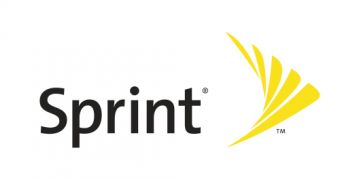Recently, mobile phone carrier Sprint has announced plans to launch next-generation push-to-talk capabilities on its CDMA network in the United States starting with the fourth quarter of the ongoing year.
According to the operator, the launch would be accompanied by the availability of specific devices with push-to-talk capabilities, that would establish a new push-to-talk brand – Sprint Direct Connect.
The wireless carrier also announced that the new service is expected to offer higher bandwidth capacity, as well as enhanced applications on Sprint Direct Connect, not to mention expanded coverage, three times larger than the current push-to-talk service.
Initially, the carrier would offer a series of handsets coming from Motorola Mobility and Kyocera, which would offer the features and capabilities that area already available on existing Sprint push-to-talk phones.
Moreover, they would include next-generation push-to-talk applications, along with high-speed data access, high-resolution cameras and Bluetooth capabilities.
Among these devices, we can count an ultra-rugged camera flip phone, along with an Android Smartphone with a touch screen and a QWERTY keyboard. More handsets would be added into the mix starting with the next year.
These handsets would offer group push-to-talk for up to 200 participants, along with features like Land Mobile Radio (LMR) interoperability, and availability notification. The carrier aims at including other features into the mix as well, such as international push-to-talk.
The Sprint Direct Connect service is part of Network Vision, Sprint's plan to roll-out a cost-effective and innovative network. The initiative was unveiled back in December, and should consolidate multiple network technologies into a single network.
According to Sprint, some of the main benefits of Network Vision to Sprint’s PTT customers would include:
Better coverage and capacity
- Push-to-talk coverage footprint is planned to increase to nearly 2.7 million square miles and is expected to cover a population of 309 million (with the addition of 1xrtt and roaming coverage) – an increase from the iDEN network’s 908,370 square miles covering a population 278 million. - In-building coverage is expected to improve significantly through investment in the most advanced CDMA technology and radio equipment. - Voice and data capacity is expected to increase significantly as Sprint will be able to fully leverage its industry leading spectrum holdings in 800 MHz, 1.9 GHz, and – through its partnership with Clearwire – 2.5 GHz.
With Sprint Direct Connect, Sprint expects: - More push-to-talk enabled devices including handsets, rugged devices, and PDAs that combine industry leading push-to-talk and mobile broadband data services over a larger coverage area. - Enhanced features for push-to-talk users on the new CDMA platform. - Interoperability with all existing Sprint push-to-talk devices.
Until Network Vision is implemented nationwide, the carrier would continue using the iDEN network at the current performance levels. However, the company aims at moving the push-to-talk customer base to CDMA with the launch of Sprint Direct Connect, which would result in shutting down the iDEN cell sites in 2013.
“Our customers are asking for broadband push-to-talk now. We’ve seen steadily increasing demand for faster data speeds, better and broader coverage, and more applications on push-to-talk devices,” said Paget Alves, president-Sprint Business.
“Sprint Direct Connect is designed to solve for all three, and is expected to come with sub-second push-to-talk call set-up time initially in Sprint CDMA RevA coverage areas. Sub-second call set up is expected to expand across the U.S. with the implementation of Network Vision.”

 14 DAY TRIAL //
14 DAY TRIAL //